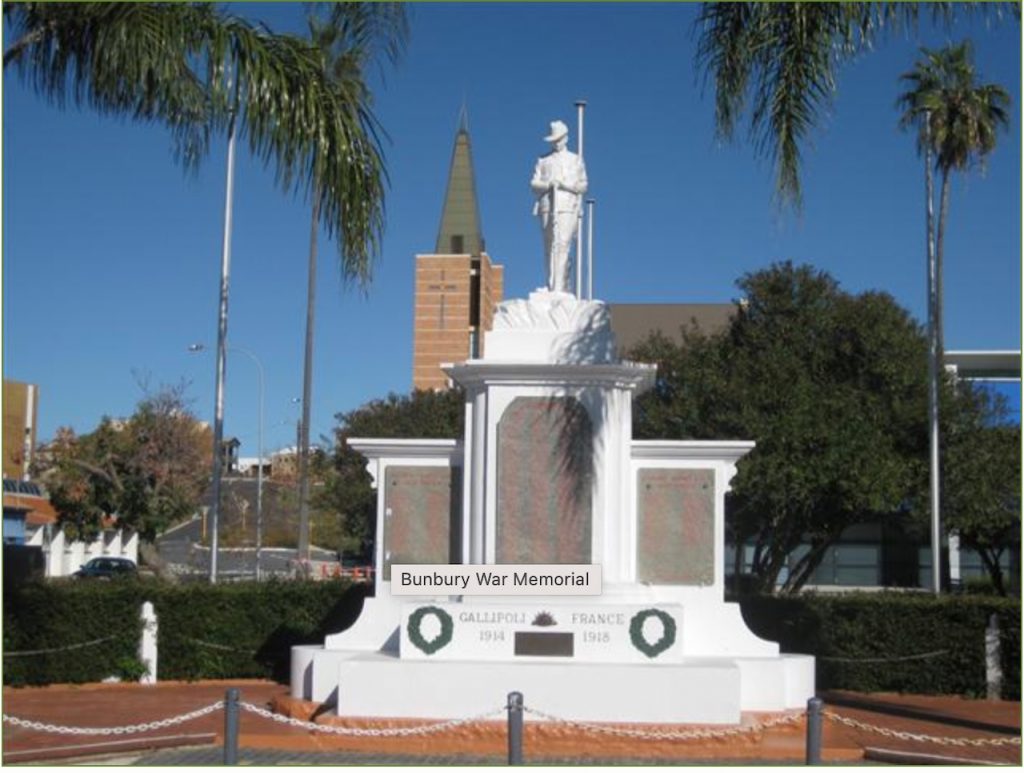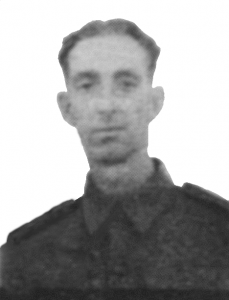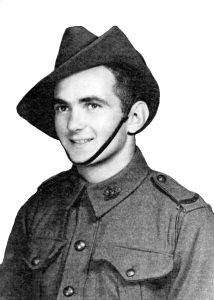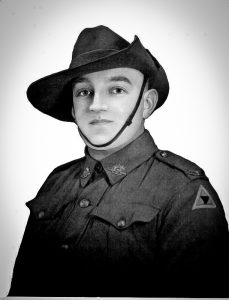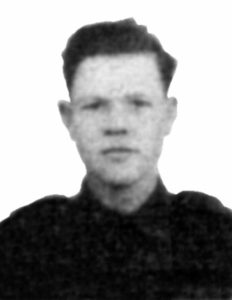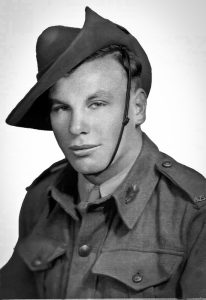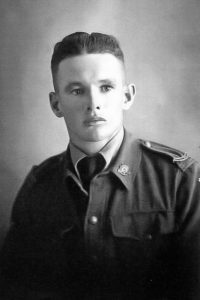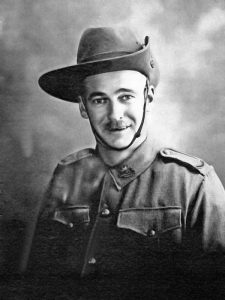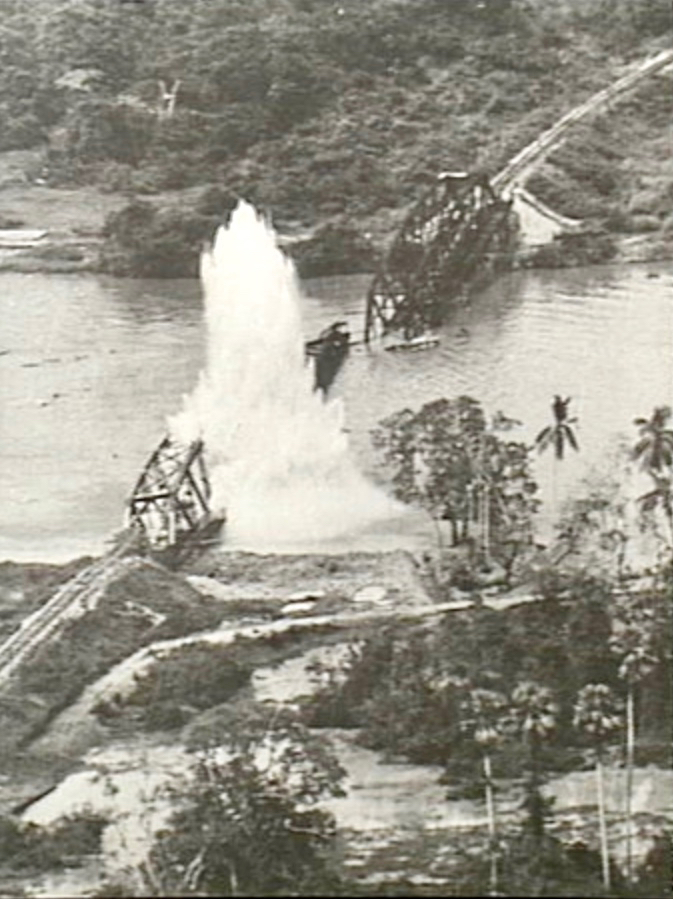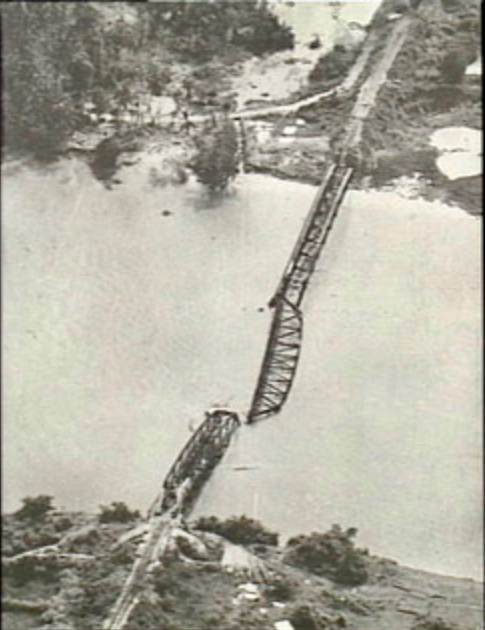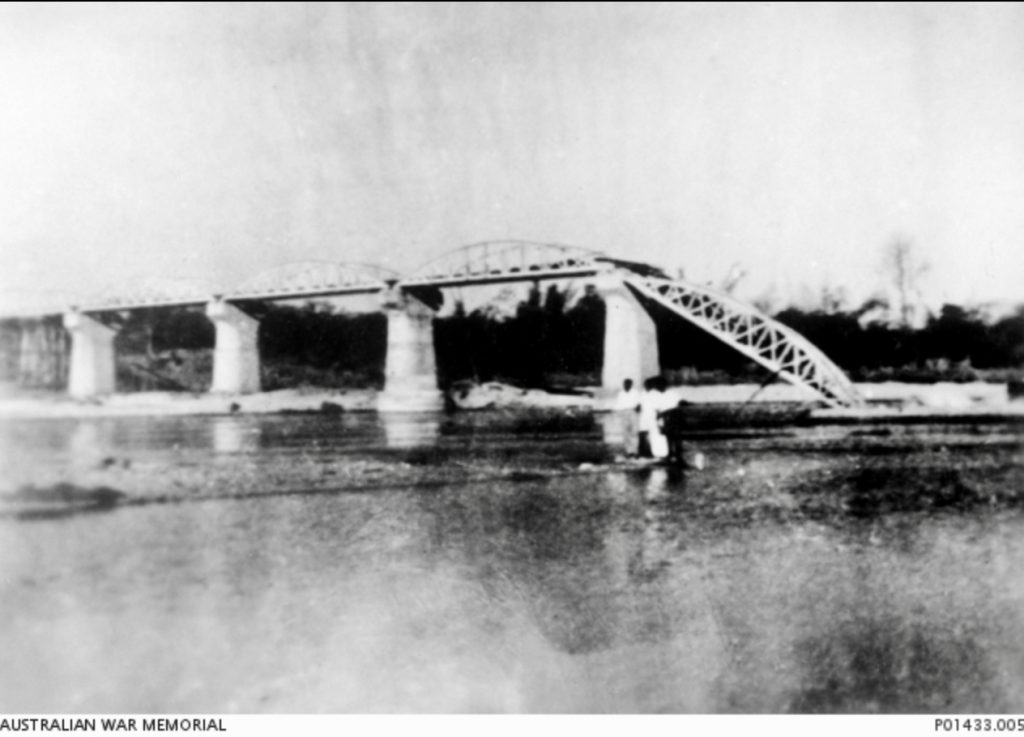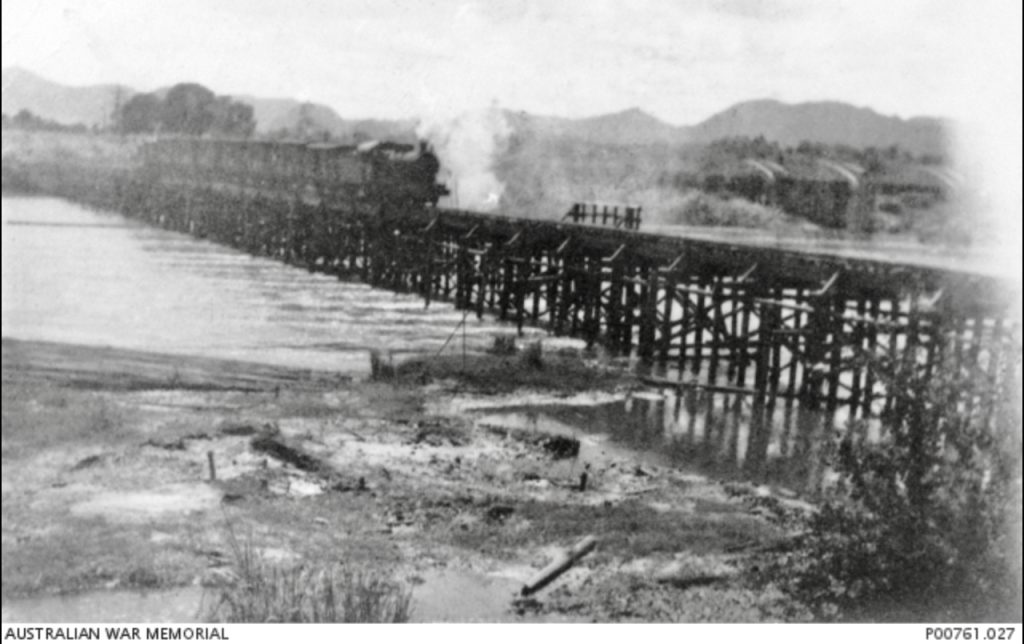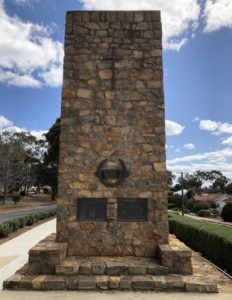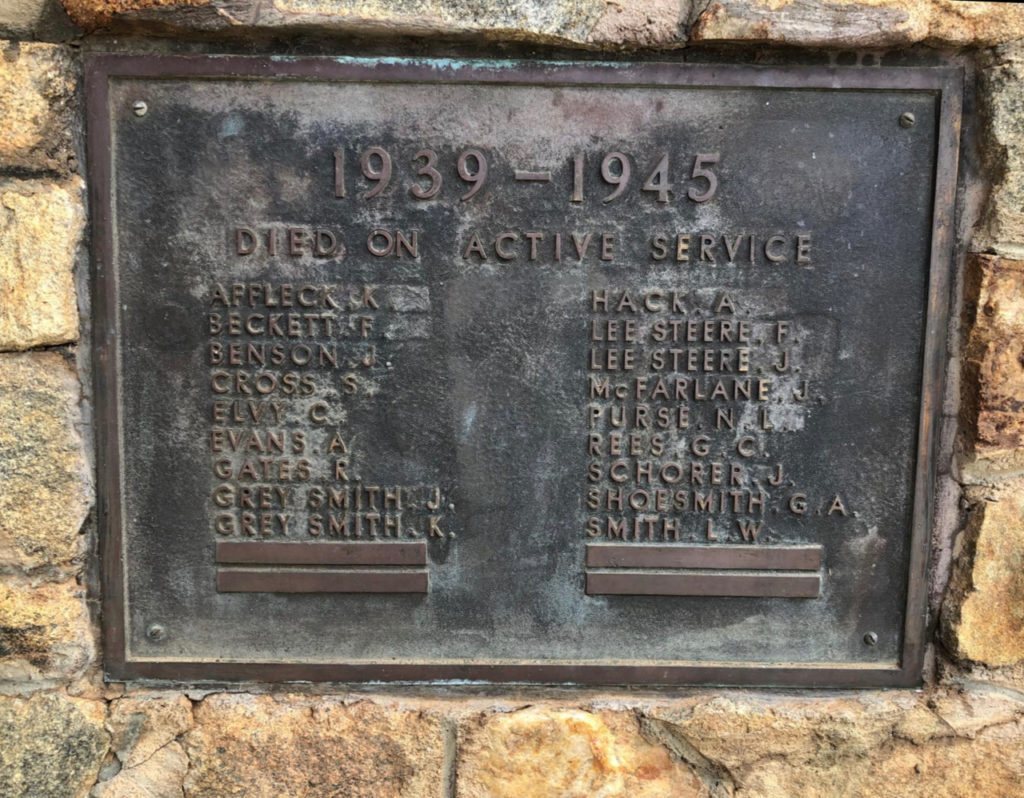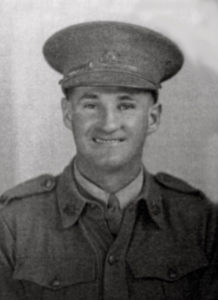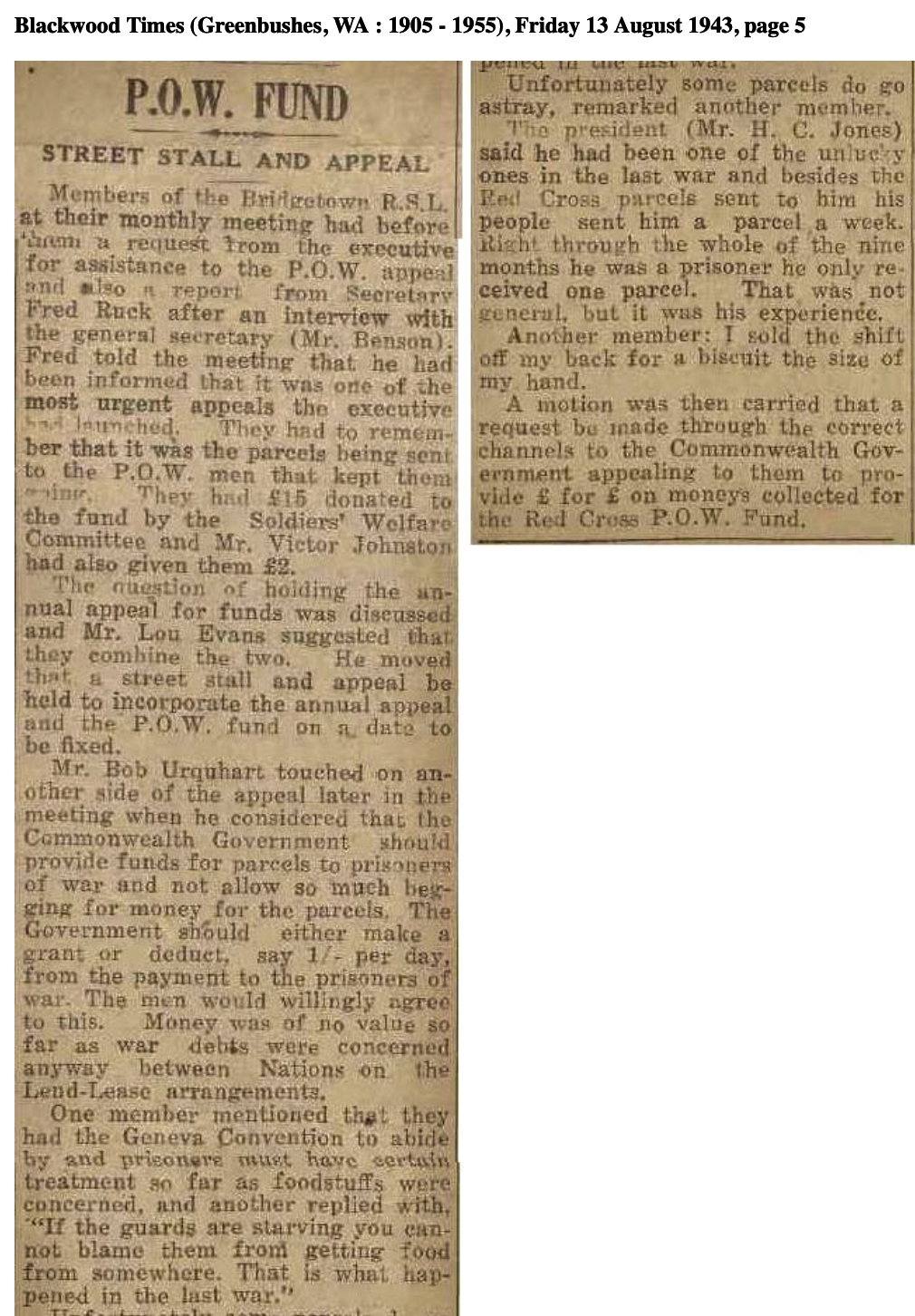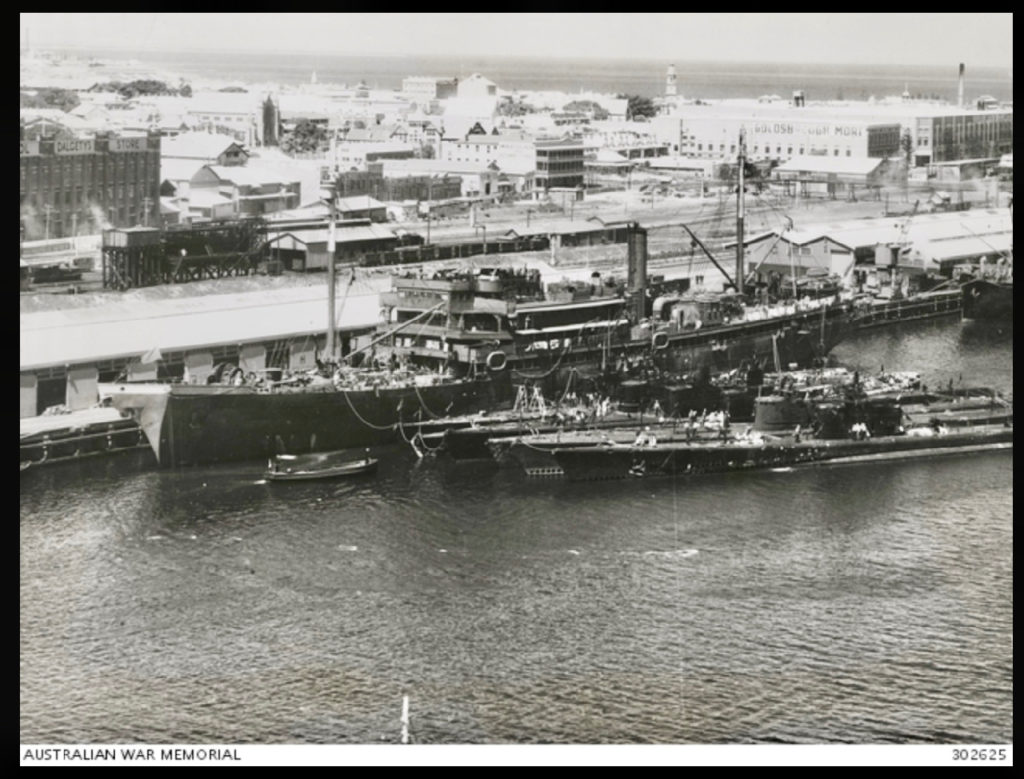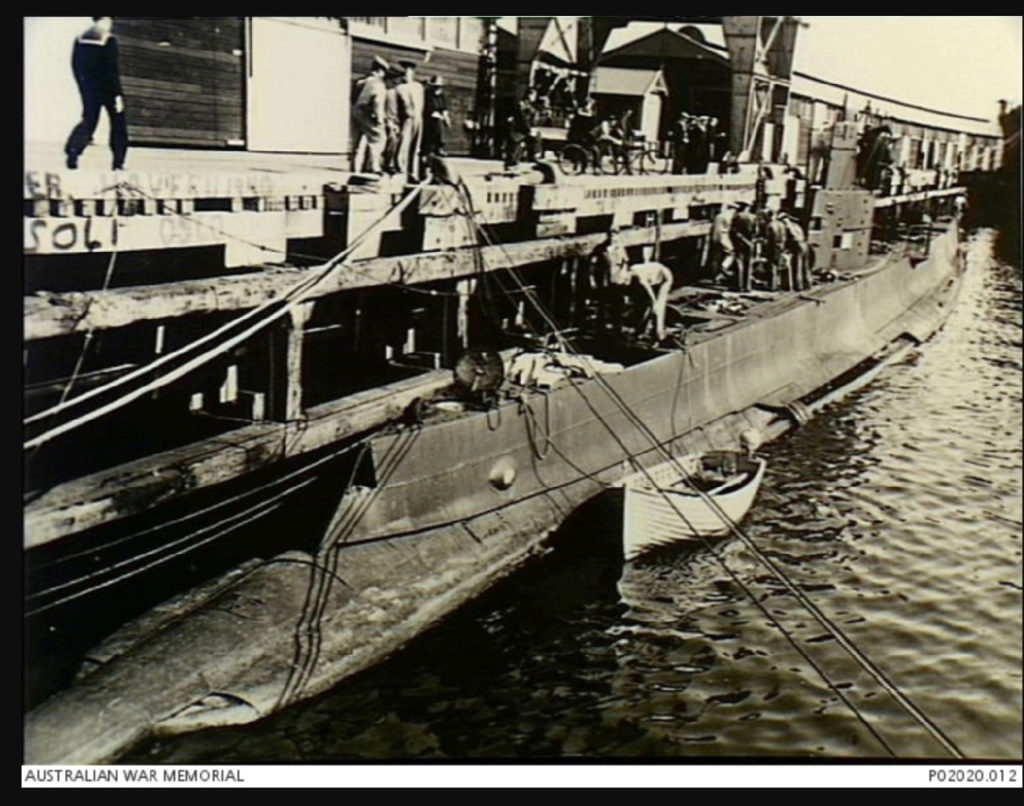There are 70 names inscribed on the Bunbury War Memorial for WW2. The Following ten men have been identified as serving with 2/4th Machine Gun Battalion.
WX7636 BEER, William John – b. Bunbury Feb 1917 to George Henry & Margarette Mary Beer. Enlisted AIF 10 Aug 1940 joined ‘D’ Coy 15 Platoon 2/4th Machine Gun Battalion.
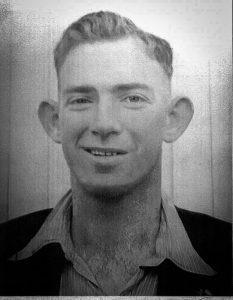
Shipped to Borneo from Singapore with ‘E’ Force to work on construction of airfield for Japanese Army at Sandakan. Died starvation & illness Sandakan, Borneo 14 June 1945 aged 28 years. Epitaph – Labuan Memorial, Borneo.
WX7629 BUGG, Frederick – b. Maylands May 1914 to George & Jessie Bugg who moved to live Bunbury.

Tragically died 29 Oct 1941 Woodside Army Camp, S.A. where 2/4th MGB were training. Aged 27 years. (Court of Enquiry failed to determine cause of death, but determined there was nothing to suggest foul play). Buried West Terrace Cemetery, S.A. Fred was also a member of 10 Platoon.
WX7625 CLARKE, James Sydney – b. 1918 Bunbury to James and Nellie Clarke. Clarke enlisted AIF 10 Aug 1940, joined ‘C’ Coy 2/4th Machine Gun Battalion, No. 11 Platoon.

As POW working Burma-Thai Railway Clarke d. 13 Aug 1943 of illness at Khonkan Hospital Camp in Burma aged 25 years. (Buried Thanbuzyayat War Cemetery, Burma)
WX16436 CLIFTON, Gordon Dagley – b. Bunbury Apr 1914 to Richard Henry & Rachael Isabella Clifton (nee Gibbs). Husband of Florence Mary Jane Clifton (nee O’Byrne) and father to son Allan. Enlisted 10 Sep 1941.
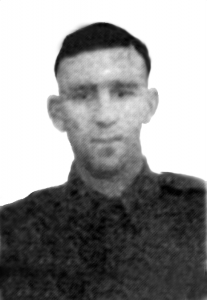
Taken on Strength 2/4th MGB Woodside Camp, SA. Joined ‘A’ Coy. KIA by shrapnel during an enemy artillery barrage at Buona Vista, Singapore 15 Feb 1942 aged 26 years. Buried Kranji War Cemetery, Singapore.
WX7620 EDWARDS, Thomas Henry – b. 1900 Shropshire, England to Henry & Francis Edwards. Arrived from London on ‘Ballarat’ 14 Dec 1922 in his early 20’s, listing his occupation as farmer. Thomas & his wife Sarah took up land through Group Settlement, Busselton.
They resided Ambergate when Thomas enlisted 10 Aug 1940, he joined ‘D’ 14 Platoon Coy 2/4th Machine Gun Battalion.
At Singapore, Edwards was one of D Coy men transferred to create additional 16 Platoon. Died of Wounds at Hill 200, Ulu Pandan 12 Feb 1942 aged 42 years.
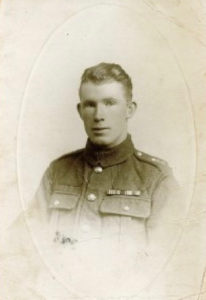
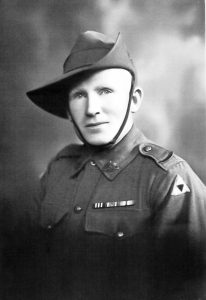
(Edwards served England WW1- No. 52912 Pte. T.H. Edwards, The Lancashire Fusiliers – received recognition ‘For conspicuous bravery and devotion to duty during British offensive in the FORET DE MORMON on November 4th 1919’.)
WX17974 GIBSON, Lionel Stephen b. Oct 1922 Bunbury to Clarence and May Gibson who resided at Clarke Street, Bunbury. Lionel enlisted 10 Dec 1941 – he became one of many very young and fresh-faced reinforcements from Northam Army Camp to join 2/4th Machine Gun Battalion on ‘Aquitania’ anchored off Fremantle for one night for supplies and reinforcements – sailed to Singapore the next day on 16 Feb 1942.

KIA during a Japanese ambush 11 Feb 1942 fighting at Singapore with ‘E’ Coy Special Reserve Battalion aged 19 years. (88 soldiers from Special Reserve Battalion were killed). Lionel Gibson died just 2 months after enlisting with AIF.
Please read further about ‘E’ Company SRB
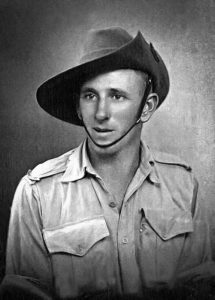
WX7851 HARRIS Charles Henry – b 20 May 1914 Picton Junction to Edward and Ellen Harris (nee Winwood). Enlisted 13 Aug 1940 joined 2/4th MGB ‘A’ Company. Selected in Singapore with ‘B’ Force Borneo to work on the airfield at Sandakan, departing July 1942.
Charlie died 27 May 1945 aged 31 years of malaria at Sandakan No. 1 Camp. He was buried at No. 2 Cemetery (which was in use until 29 May 1945).
The 2nd Sandakan to Ranau March consisting of 536 POWS began departing Sandakan in groups of 50 men from 29 May 1945, just 2 days after Charlie’s death – many were barely able to walk – they left behind 288 very ill and starving men lying out in the open grounds after the Japanese burned down their huts .
Please read further about ‘B’ and ‘E’ Forces Borneo.
Two sisters of Charlie Harris married 2/4th mates.
Myrtle May Harris married Harry Delaporte WX8011who perished South China Sea 12 Sept 1944 when
‘Rakuyo’ Maru transporting POWs to Japan was sunk by American submarines.
Please read about ‘Rakuyo’ Maru sinking
& sister Ellen Bertha Harris married Claude Knott WX7616 (former Fairbridge Farm School Boy)
Delaporte, Knott and Harris were all in ‘A’ Company. Knott was the only one to return home.
The Harris and Delaporte families were early pioneers of the district.
WX7628 HOWARD, Edgar Joseph known as Tim – b. June 1912 Armadale to George Joseph and Beatrice Victoria Howard (nee George). Enlisted 18 Oct 1940 joined 2/4th MGB ‘A’ Company, promoted to Sergeant 7 Feb 1942.
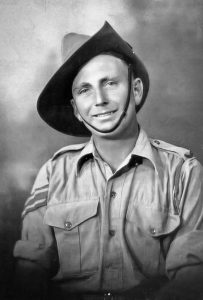
As POW at Singapore, Howard was selected with ‘H’ Force Thailand to work on Burma-Thai Railway around the Hellfire Pass Cutting.
Please read further about ‘H’ Force Group No. 3.
Howard died of cholera 1 July 1943 aged 31 years.
‘Tim’ Howard married Elsie Beryl Pickersgill 1932. They had two children. The youngest, son Peter John Howard born in 1939 tragically died 1944 aged 5 years.
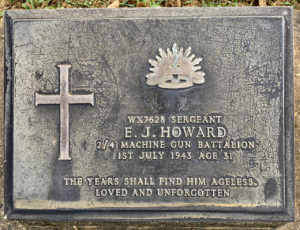
WX9433 JONES, Norman (known as Taffy) – (10 Platoon) b. Dec 1905 Mostyn, North Wales, UK to John & Ann Jones.
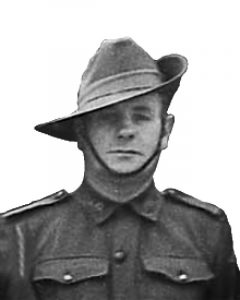
Enlisted Dec 1940 joined ‘C’ Coy 2/4th Machine Gun Battalion, 10 Platoon. Departed Singapore Railway Station March 1943 with ‘D’ Force Thailand S Battalion to work on Burma-Thai Railway, at the Hellfire Pass Cutting.
Evacuated to Chungkai Hospital Camp d. Nov 1943 of illness aged 37 years. Buried Kanchanaburi War Cemetery, Thailand.
(In England served 6 years with Royal Tank Corps).
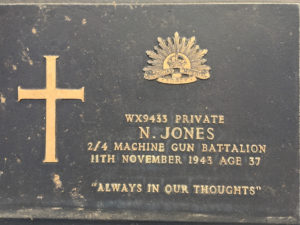
His body rests at Kanchanaburi War Cemetery, Thailand. One of 91 men from 2/4th MGB.
WX16883 PLATTS, Norman Willis b. Bunbury 24 March 1910 to Herbert Platts and Ethel Jane Maslin.
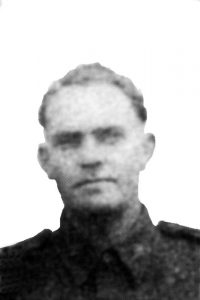
Enlisted 6 Oct 1941. As reinforcement joined ‘E’ Company Special Reserve Battalion, promoted to Sergeant on 7 Feb 1942. Norm was KIA aged 31 years during Japanese ambush Singapore South-West Bukit Timah 11 Feb 1942. It was 4 months since he enlisted with AIF.
Norm was a committed member of Bunbury Rowing Club, a musician and also involved with Scouts. Norm married Annie ‘Ray’ Armstrong 1930, they had two children Ivor and Margaret.
Please read further about ‘E’ Company
Norm’s younger brother Richard Sleath Platts born 1916 also enlisted. Richard WX5686 joined 2/16th Battalion. He died 5th December 1942 at Bomana near Port Moresby, New Guinea.
This following list of Bunbury enlistments may not include all the men. This was printed in 1941.
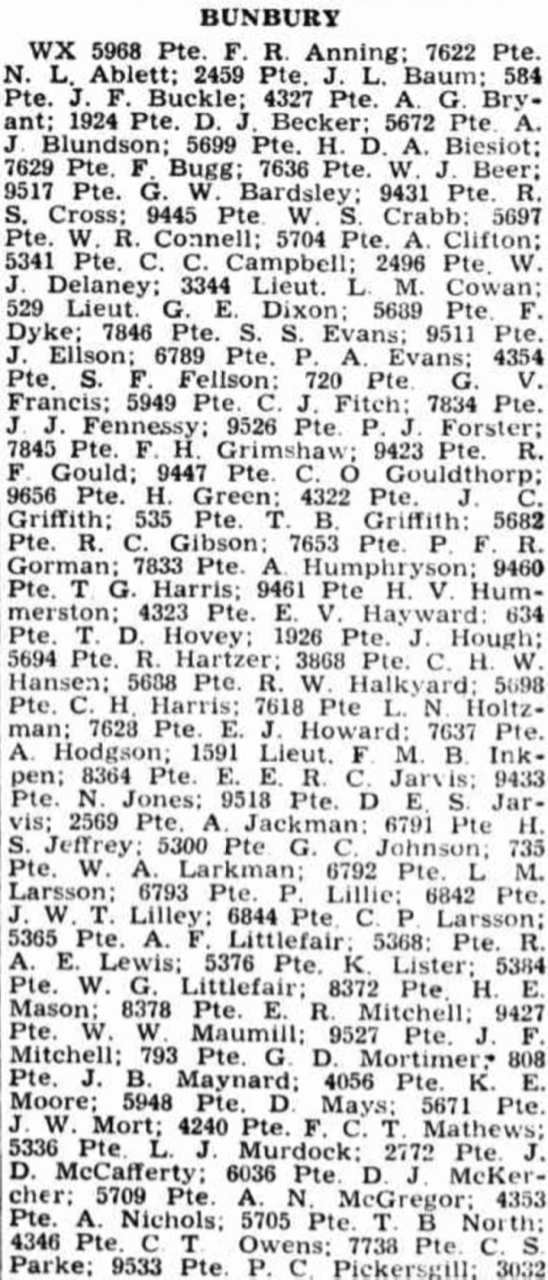
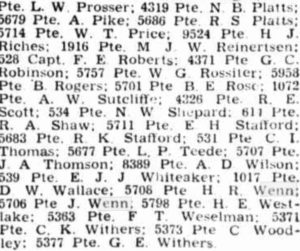
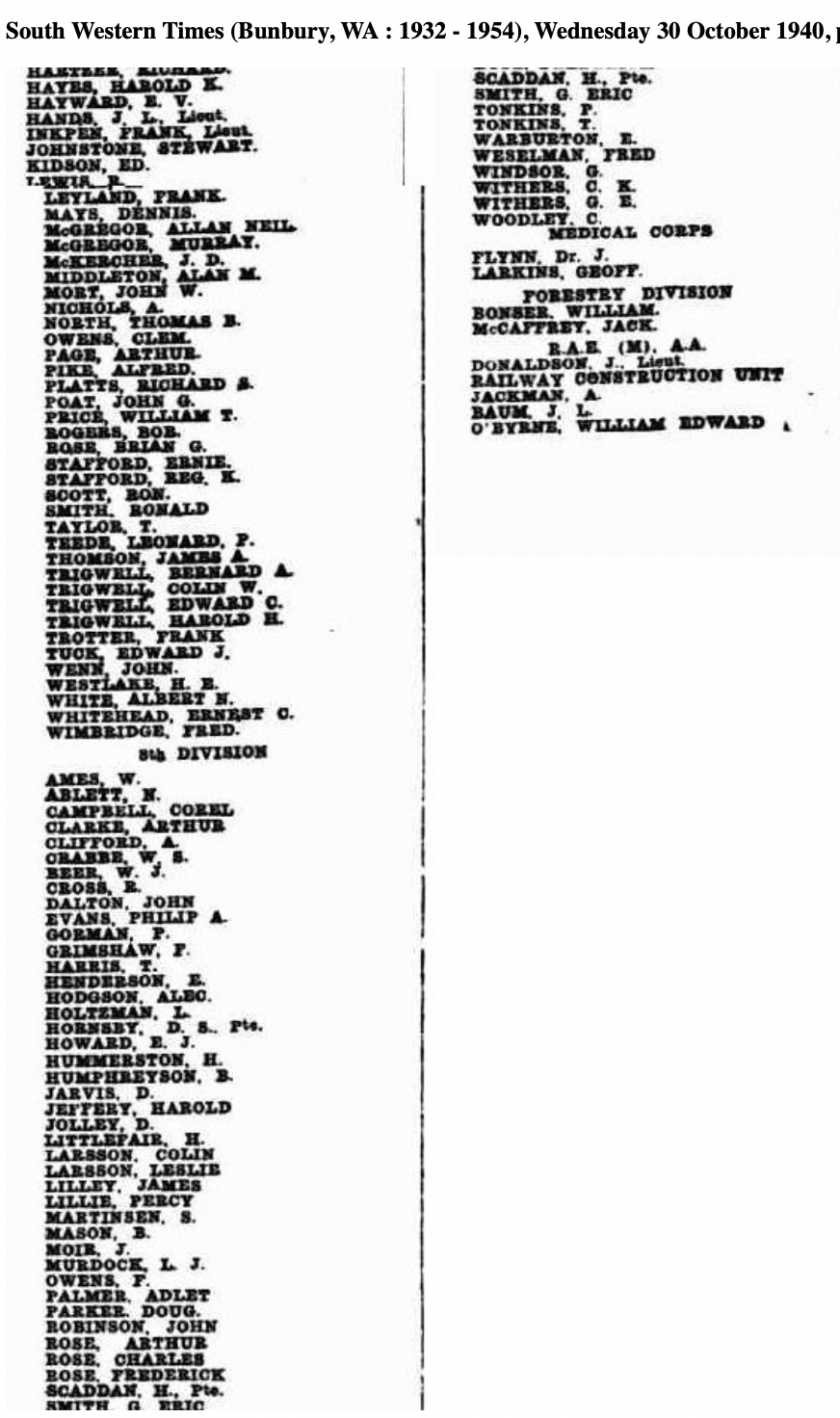
Bunbury boys who enlisted and/or had family/connections with Bunbury/nearby regions and returned home include:
WX7266 Ablett, Norman Leslie (Norm) (10 Platoon) his father Thomas Henry Ablett was appointed to Bunbury GPO in 1937. He was sent to work on Burma end of Burma-Thai Railway with Green Force which included a large number of 2/4th. Norm survived and was selected as bing ‘fit’ by the Japanese and sent to work in Japan with ‘Awa’ Maru Party. He was sent to work at the Omuta coal mines from where he was recovered at the end of the war.
WX17591 Dow Claude died 13 July 2001 aged 84 years and is buried at Bunbury Cemetery. Please read about Claude.
WX8119 Fullerton, Sgt Rodney Charles (10 Platoon Sergeant) badly wounded during fighting Reformatory Road, Ulu Pandan 11 Feb 1942 – Fuhrmann took over his role. Rod Fullerton spent the war at Changi – for many months in hospital and later in recovery.
WX15427 Griffith, Cpl Keith George was born Bunbury1922 to Mark and Ada Griffith. He joined ‘A’ Coy HQ as a Cook and Corporal. Griffith was wounded at Buona Vista with shrapnel wounds to his wrist, left knee and thigh. Discharged to Unit 22 Feb 1942. Left Singapore with first work party. ‘A’ Force Burma Green Force No. 3 Battalion. They began working on the railway at the Burma end. Griffith was recovered from Thailand at the end of the war. He died Perth May 2011.
WX7642 Henderson, Clarence Gordon (Clarrie) – (10 Platoon) Clarrie was born Bunbury 1917 to Robert Clarence and Ada Henderson. Enlisted 10 Aug 1940. ‘C’ Coy. Was AWOL when ‘Aquitania;’ sailed from Fremantle 16 Feb 1942 to Singapore. Was one of 88 machine gunners to do so and were instead landed in Java where they were taken POWs of Japan several weeks later. Sailed from Java with ‘D’ Force Thailand Java Party No. 6 P Battalion to work on Burma Thai Railway. Later deemed ‘fit’ by Japanese to work in Japan. Sailed with ‘Rashin’ Maru Party 70 long days, to Moji, Japan. He worked Saganoeski copper smelter then Omine coal mining from where he was recovered.
WX7618 Holtzman Leslie Norman (Les) (10 Platoon) born Bunbury 1920 to Norman Guy and Hilda Olive Holtzman. Joined 2/4th’s ‘C’ Coy. Sailed from Singapore as POW of Japan to Burma to work on Burma end of Burma Thai Railway. Les was later selected ‘fit’ to work in Japan with ‘Awa’ Maru Party. Worked at Omuta coal mine from where he was recovered at end of war. Please read about Omuta.
Holtzman is buried at Bunbury.
WX16886 Magill Arthur Please read about Arthur Magill.
He died at Bunbury 11 July 1979 aged 60 years and was buried there.
WX8478 McGlinn Francis (Frank) – returned to live Bunbury, died aged 39 years in an accident early 1950’s -(10 Platoon). Worked on Burma Thai Railway with ‘D’ Force Thailand S Battalion which included a large number of 2/4th men. Later deemed ‘fit’ by Japanese Frank sailed to Japan with ‘Rashin’ Maru Party. Worked Yamane and Niihama Copper mine from where he was recovered when war ended.
Returned home to learn his widow mother Helen Margaret McGlinn had several years earlier been murdered while walking across a nearby park in Perth in daylight hours.
His first cousin WX11580 Donald Spencer McGlinn also joined 2/4th (11 Platoon) as a reinforcement. Don McGlinn worked on Railway with ‘D’ Force S Battalion, died aged 28 years at Tarsau Hospital Camp, Thailand of dysentery and avitaminosis.
WX5336 Murdoch, James Lewis b.1922 Donnybrook to John Murdoch and Agnes enlisted 27 July 1940. Joined ‘D’ Coy 15 Platoon. Murdoch however was landed at Java and not Singapore. Taken POW of Japan 8 Mar 1942. He sailed with Java Party No. 4 Williams Force via Singapore to Burma to work on the Burma end of the Railway. At the end of the war, Murdoch was recovered from Thailand.
WX7738 Parke Charles Spencer (Charlie) b. 1916 Brunswick Junction to Sydney Spencer and Kathleen Mary Parke. Enlisted 10 Aug 1940. Joined ‘A’ Coy.
Worked on Burma Thai Railway with ‘D’ Force Thailand V Battalion which endured a shocking death rate. Charlie survived to be sent to Japan with ‘Aramis’ Party and worked at Omuta Coal mine with terrible working conditions and brutality was extensive. He was recovered from Omuta at the end of the war.
WX8562 Schutts Aubrey Vincent (Aub) Worked on Burma-Thai Railway with ‘D’ Force Thailand S Battalion and was then selected in 1944 to work in Japan from where he was recovered at the end of the war.
Schutts died in Bunbury 6 Sept 2007 aged 94 years and buried at Bunbury Cemetery.
WX9157 Tapper Albert Leslie (Snow) born 1917 Perth to Albert Leslie and Mary Margaret Tapper. Enlisted 30 Oct 1940 later joined ‘D’ Coy.
Sent to work northern end of Burma Thai Railway with ‘A’ Force Burma, Green Force No. 3 Btn. He was medical orderly at Khonkan 55km Hospital Camp in Burma
Missed draft to Japan, possibly because he remained longer at Khonkan hospital as orderly.
Was recovered from Thailand at the end of the war.
Tapper died 23 May 1983 aged 65 years and is buried at Bunbury Cemetery.
WX7641 Wenn Stanley Keith (Stan or Mick) – (10 Platoon) enlisted 10 Aug 1940. Born Bunbury 1912 to Henry and Mabel Wenn. Sailed to Japan with ‘Wales’ Maru Party – ‘J’ Force which initially accommodated at Kobe House until it was bombed in 1945. He was recovered from Notogawa at the end of the war.
Wenn returned to Bunbury, and died 10 November 1981 and is buried at Bunbury Cemetery, Anglican Section F173
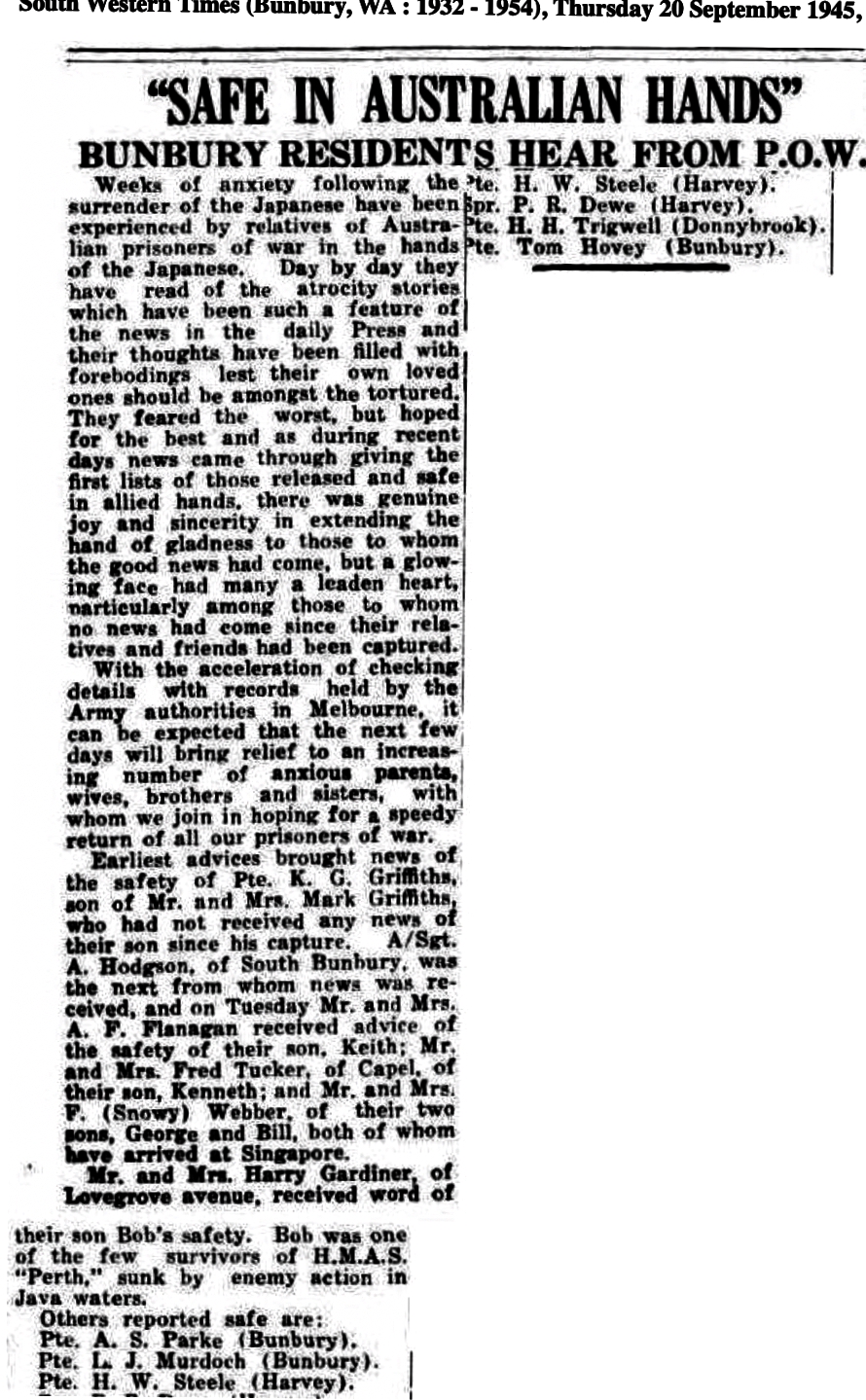
Below: Recruits for armed forces from Bunbury at 30 Oct 1940.
The 8th Division is not written, but the men are listed.



